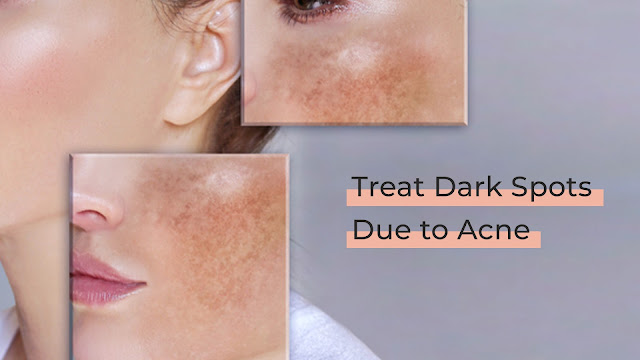HOW TO TREAT DARK SPOTS DUE TO ACNE ?
Acne is a common skin condition affecting people in their teenage, which might also escalate to their 20s, 30s, and even beyond. It occurs when your skin pores get blocked by an oily substance called sebum, or bacteria, and dead skin cells. This skin blockage produces whiteheads, blackheads, nodules, and other types of pimple.
According to research, 80 % of people between 11 to 30 years of age experience pimples in their mild to extreme form. So, you are not alone, as most people experience this skin disorder at some point in their lives.
The Two Phases of Acne
The life of acne can be broadly divided into two phases;
- Active breakout
- Dark Spots
So, the acne doesn’t get over with redness, irritation, inflammation, pus, etc. Even after you manage to cure these conditions, its memory survives in the form of damage caused in the shape of dark spots.
Active Breakout
Active breakout is the after stage of blackheads and whiteheads. It is when the bumps become inflamed, starting to accumulate pus. In the beginning, these bumps are surrounded by red rings, causing itchiness and redness, and you feel a constant urge to scratch them. However, it is advised that you should never rub the acne, as otherwise, the fungal infection would spread all over your skin.
Dark Spots
In the active breakout stage, acne has a life cycle of around four to seven days. But, when it starts to dry, it leaves a prominent mark on its place.
The acne marks or dark spots can be broadly classified into two types;
- Post-inflammatory erythema (PIE)
- Post-inflammatory hyperpigmentation (PIH)
What is PIE?
Post-inflammatory erythema or PIE is a term used for a red mark, generally seen on people with lighter skin tones. They form due to damage done to the capillaries found around your skin surface. Several reasons can be responsible for the formation of PIE, and it appears when;
- You face some skin-related trauma, like maybe a tight slap
- You pop your pimple in its early stage
- You over-exfoliate your skin
- You pick up the dry patches on the skin
All these reasons damage your skin cells and blood vessels around the skin's surface, resulting in PIE.
What is PIH?
Post-inflammatory hyperpigmentation or PIH is the condition when you notice dark brown or black spots developing on your skin. They result from the over-production of melanin (the pigment that gives dark color to your hairs, eyes, skin, etc.). PIH is commonly seen in people with dark skin tones as they possess overactive melanocytes.
PIH can result because of the following reasons;
- Excessive sun exposure
- Hormonal changes during pregnancy
- Signs of aging
- Picking on wounds
- Strong skin treatments
So, how do you find out whether the dark spot on your skin is PIE or PIH? There's a simple procedure to ascertain it. You have to squeeze the mark and wait for a few seconds. If it disappears or turns white with the pressure, it is probably PIE, but it is PIH if the darkness remains the same.
Treatment for PIE and PIH
PIE and PIH can be treated using the right ingredients that are introduced in the best dark spots remove cream. You should find skin creams that include collagen and ceramides as active ingredients for quick and effective results.
Ceramides are lipids or fats that fill the gaps between the cells that appear on the top layer of your skin. They moisturize your skin and remove allergens, air pollutants, and chemicals included in your makeup products.
On the other hand, collagen is found in the deeper layers of your skin, and infusing collagen through good skincare products helps maintain the plumpness and elasticity of your skin, making you look youthful.
Furthermore, the best creams for dark spots include retinol, vitamin C, and niacinamide as primary ingredients because retinol helps minimize breakouts and prevent wrinkles, fine lines, and dark spots. Vitamin C contributes towards repairing damaged cells and cartilages to even out your skin tone and prevent premature ageing. In addition, niacinamide is a type of protein that keeps your skin firm and healthy.


Comments
Post a Comment